
STYLES
Art Nouveau
Meaning "New Art" in French, this style emerged circa 1890 and flourished until the early 20th century arising as a reaction against the academic art, eclecticism, and historicism that dominated the 19th century - aiming to create a new aesthetic for the modern age. Inspired by natural forms and structure it intended to harmonize art with everyday life by integrating design and craftsmanship across architecture, interior design, and decorative arts.
Key characteristics:
Organic and Flowing Lines
Nature-Inspired Motifs
Asymmetry
Whiplash curves
Integration of Art and Craft

Bird's Eye view of the villa frontage with access road wrapping around the pond
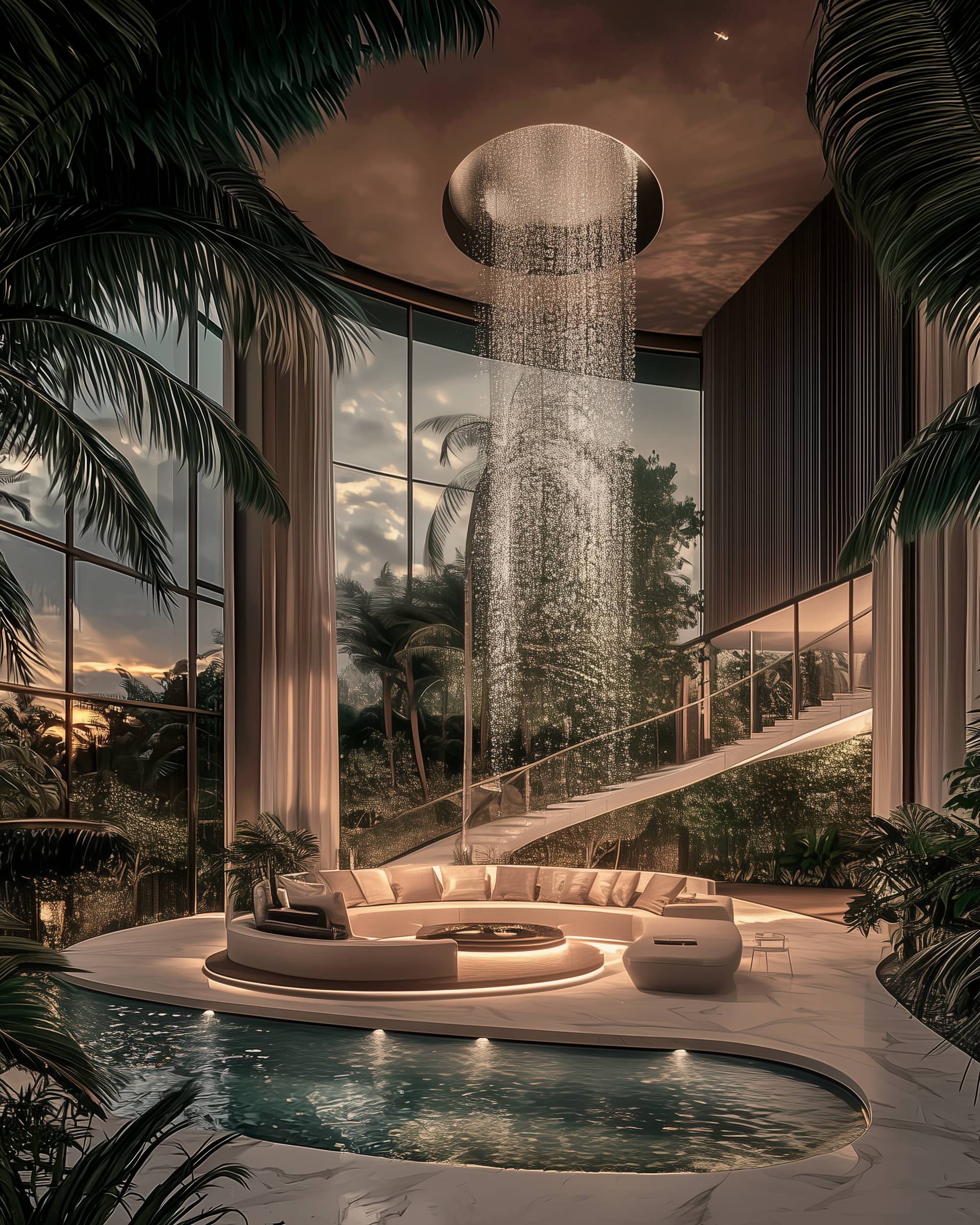
Grand entry foyer with a crystalline chandelier resembling a waterfall
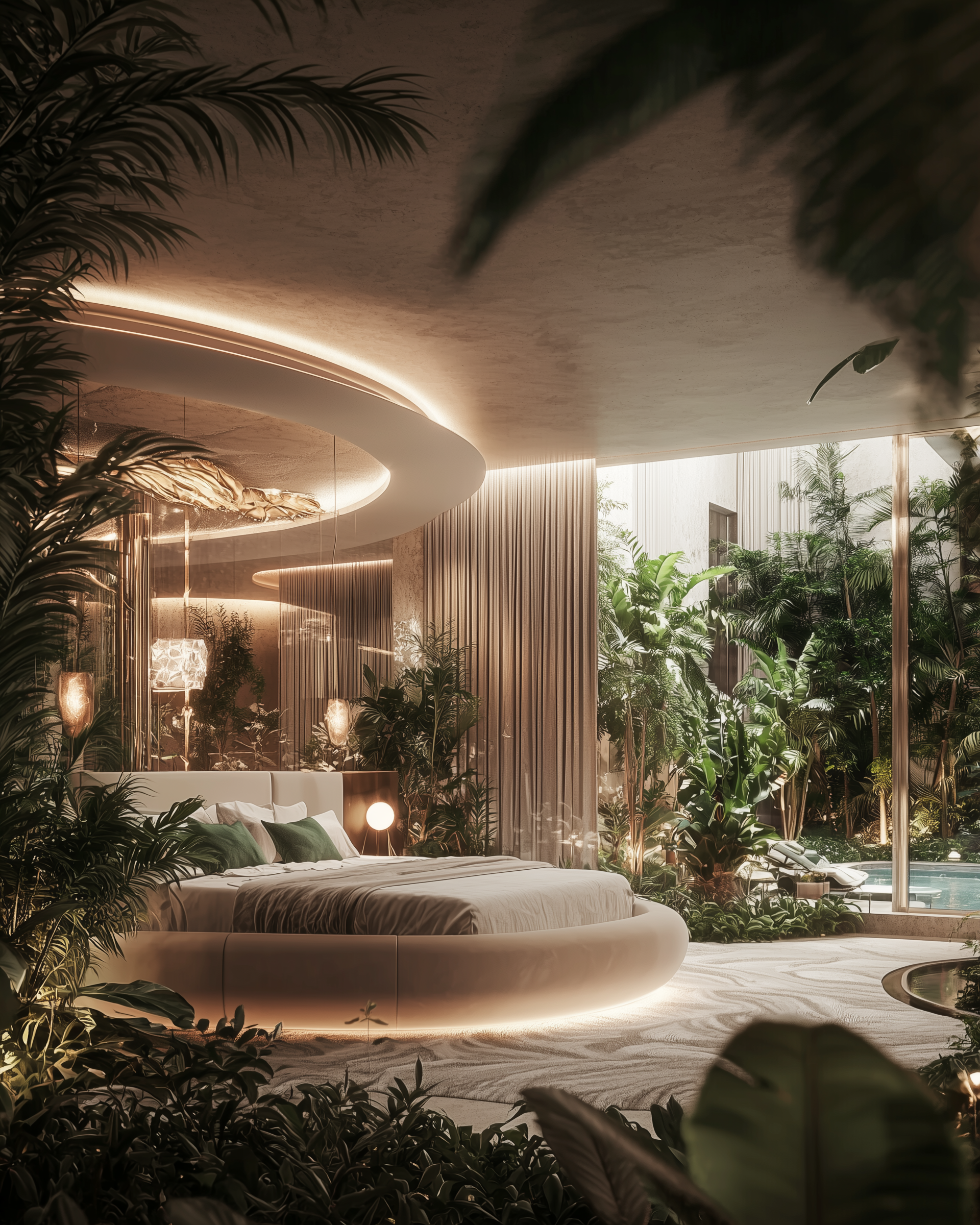
Master bedroom with private garden

Garage approach
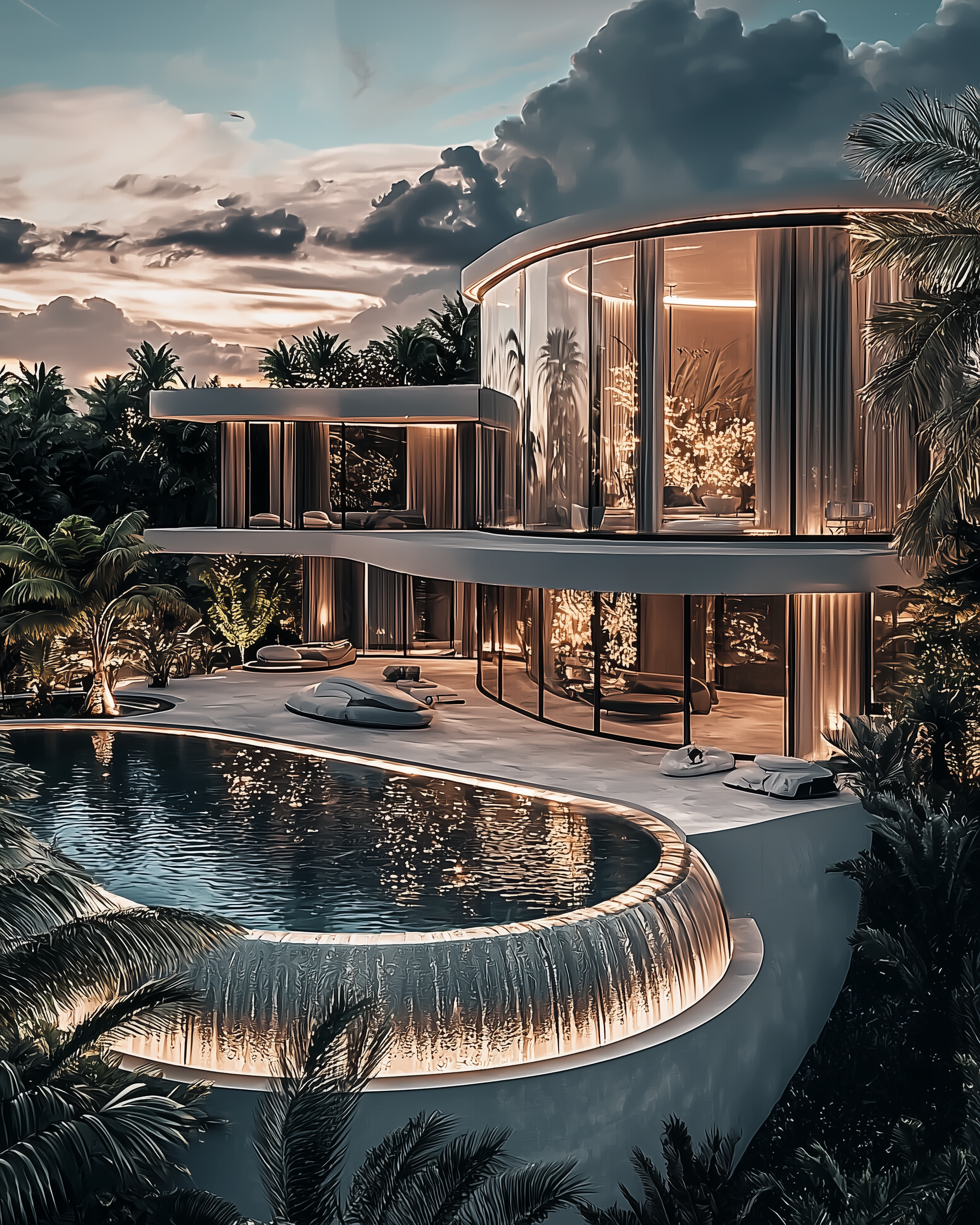
Back pool garden with rounded acrylic overflow edge
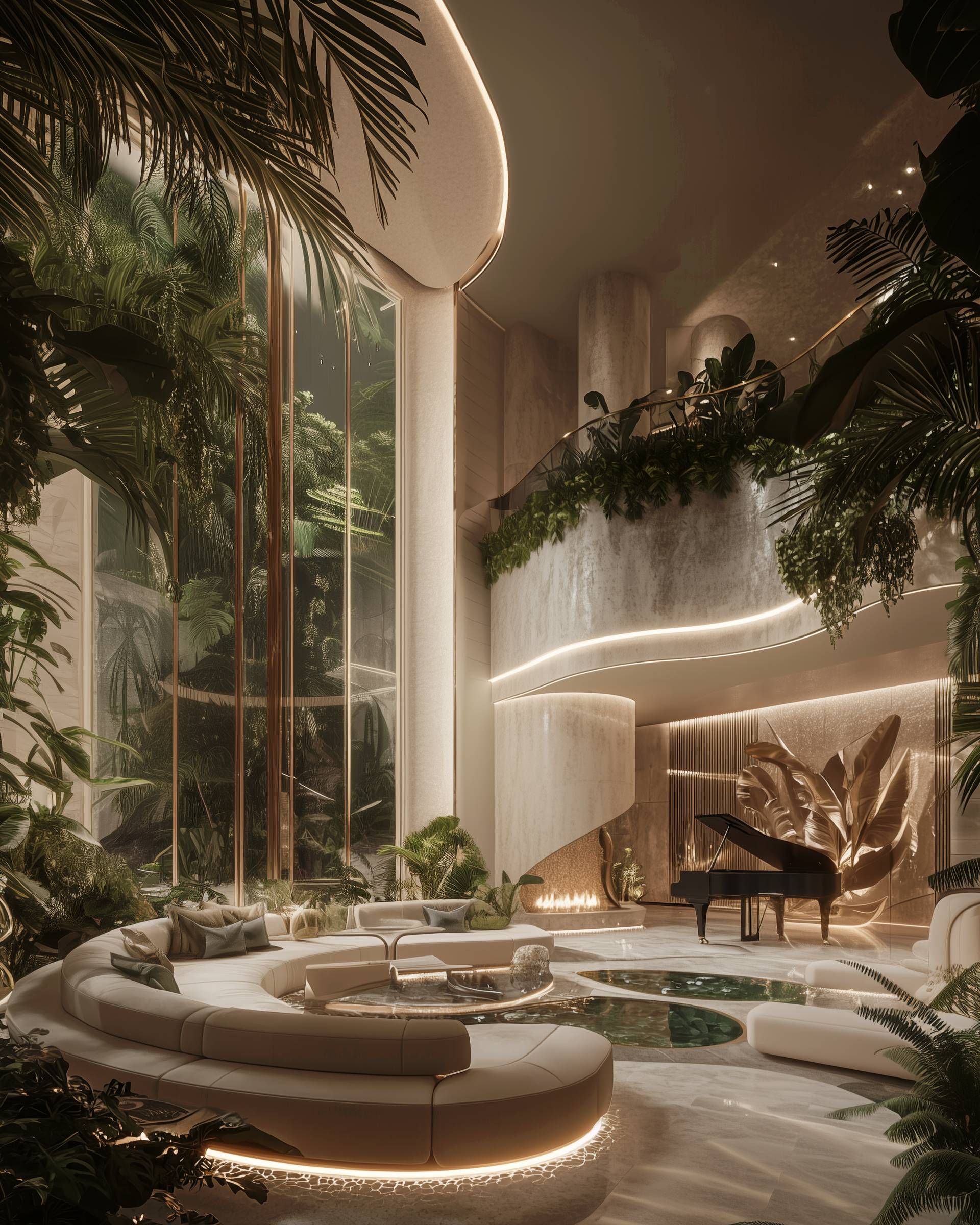
Main living area with statement curved sofa
Modern Arabic
Reinterpreting a traditional design in a modern context is always a challenge, especially considering the rich cultural heritage of arabic architecture. It is about capturing the essence of the style so that the unique relevance is not lost when transofrming the geometries to accomodate the contemporary aesthetic.
Key characteristics:
Central courtyards
Geometric patterns
Mashrabiya screens
Arches and domes
Curtains

Front Access
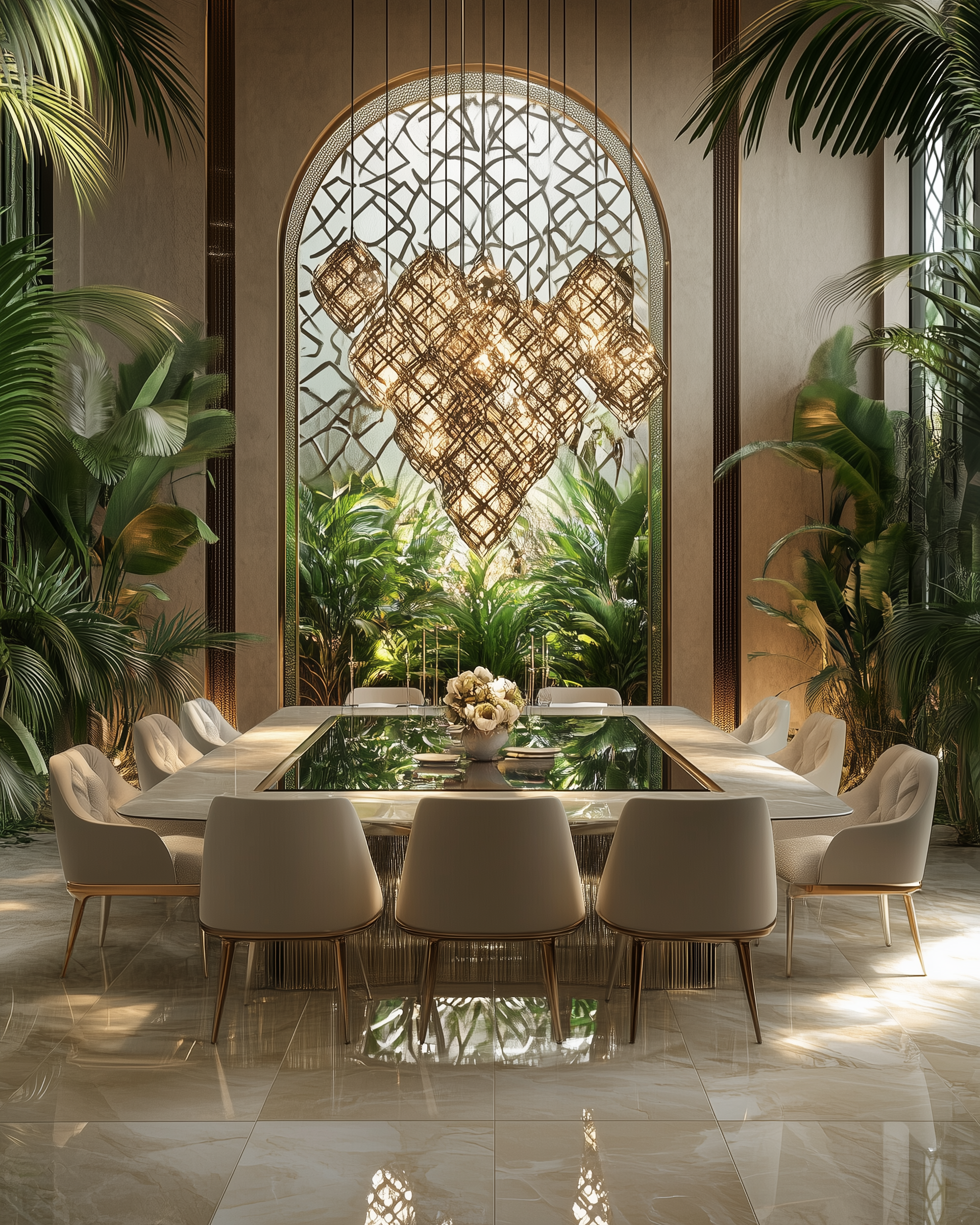
Formal Dining Area
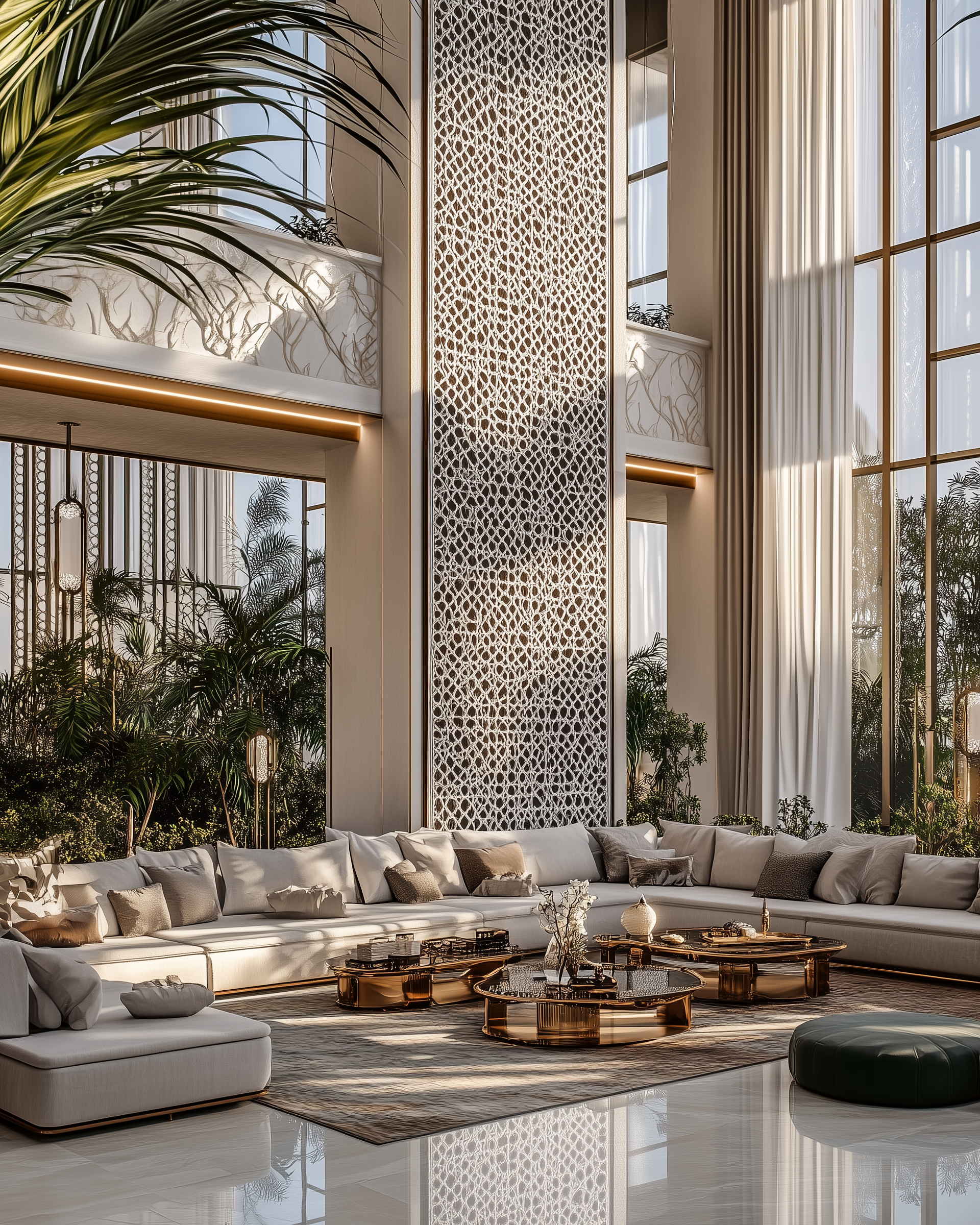
Main Majlis-style Living Area

Side Courtyard Lounge

Pool Area
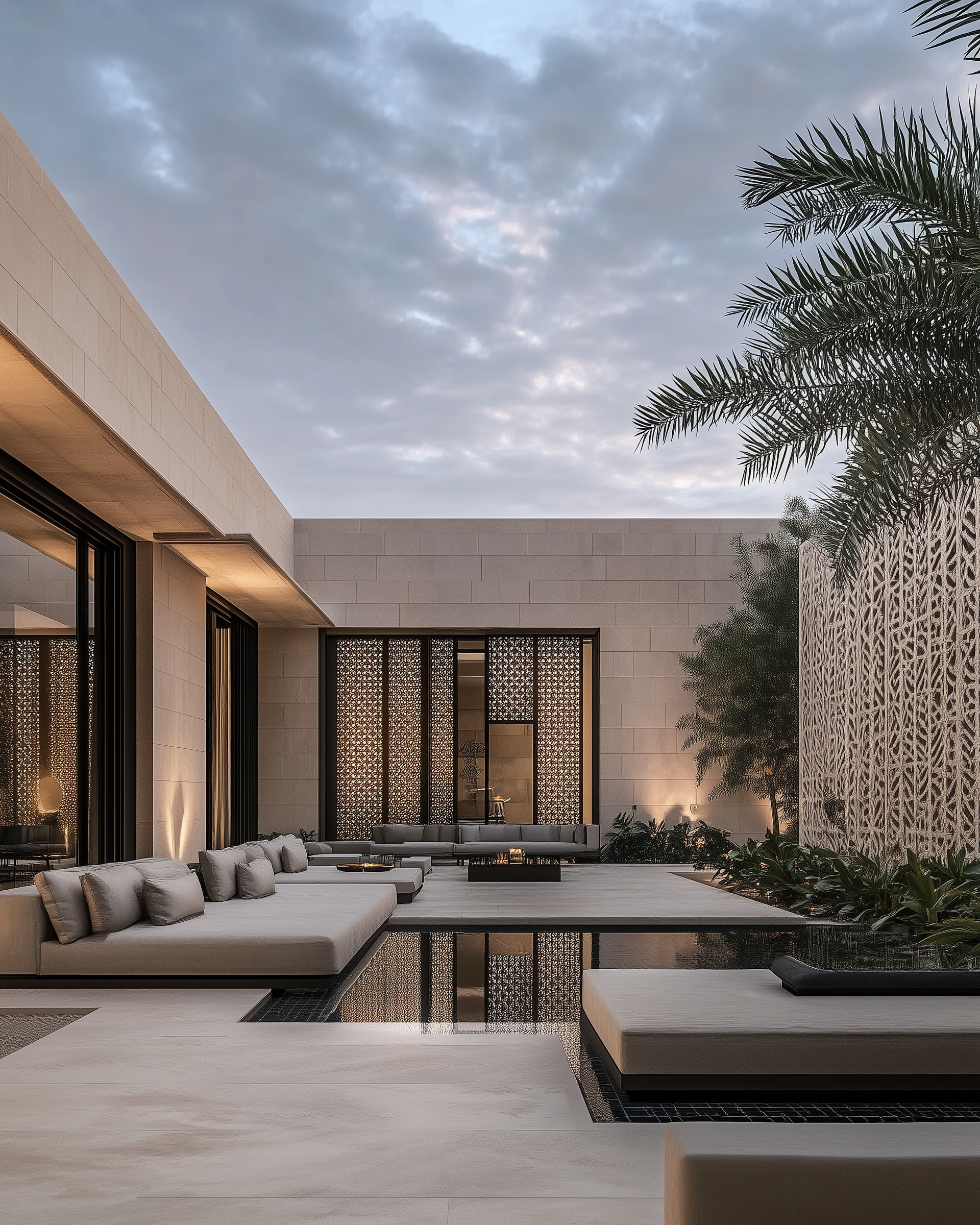
Coyrtyard Lounge
Contemporary Glam
AKA Modern Glam, this design style is very popular in Dubai - and to no surprise. Combining modernity and luxurious, elegant features it results in spaces that are both sophisticated and inviting. There is however a fine line between elegance and excess which is bound to be subjective and will inevitably go down to personal preferences. In the examples below I show my attempt at striking the right balance.
Key characteristics:
Sleek and modern with luxurious accents
Luxurious materials and finishes
Opulent interiors with statement pieces
Sophisticated color palette
Indoor-outdoor living and curated views

Front Facade with Motorcourt
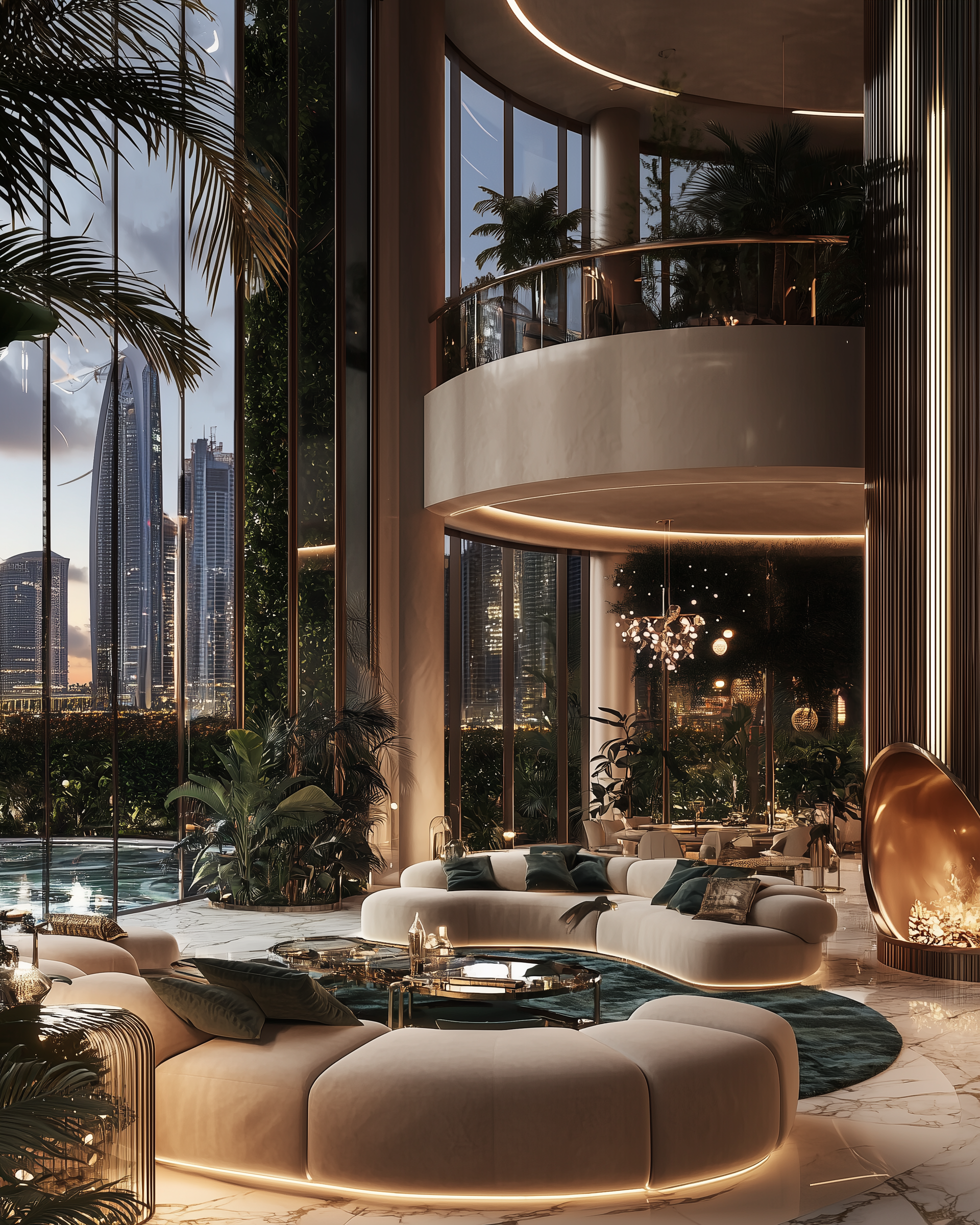
Main Living Area

Grand Foyer

Master Bedroom
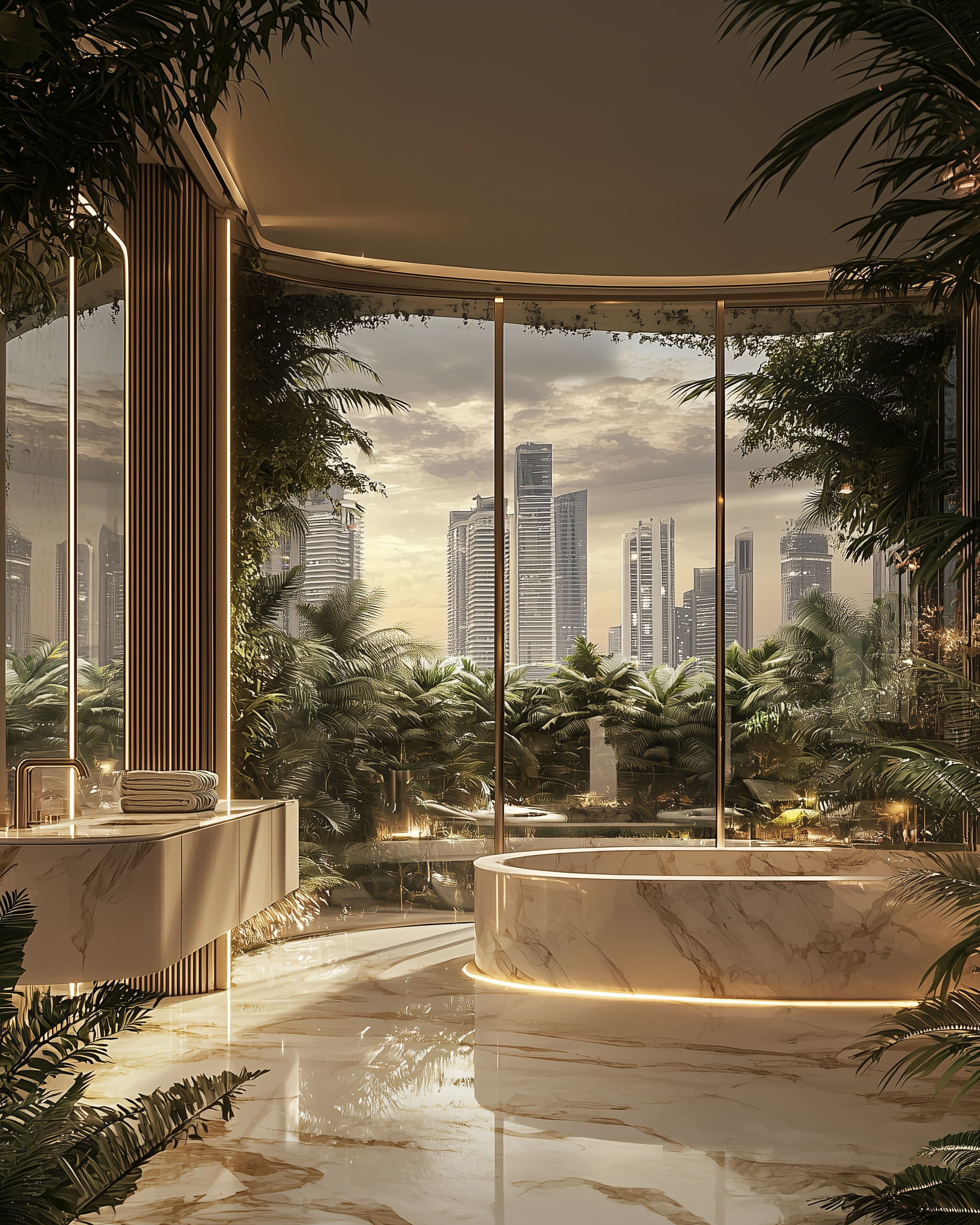
Master Bathroom
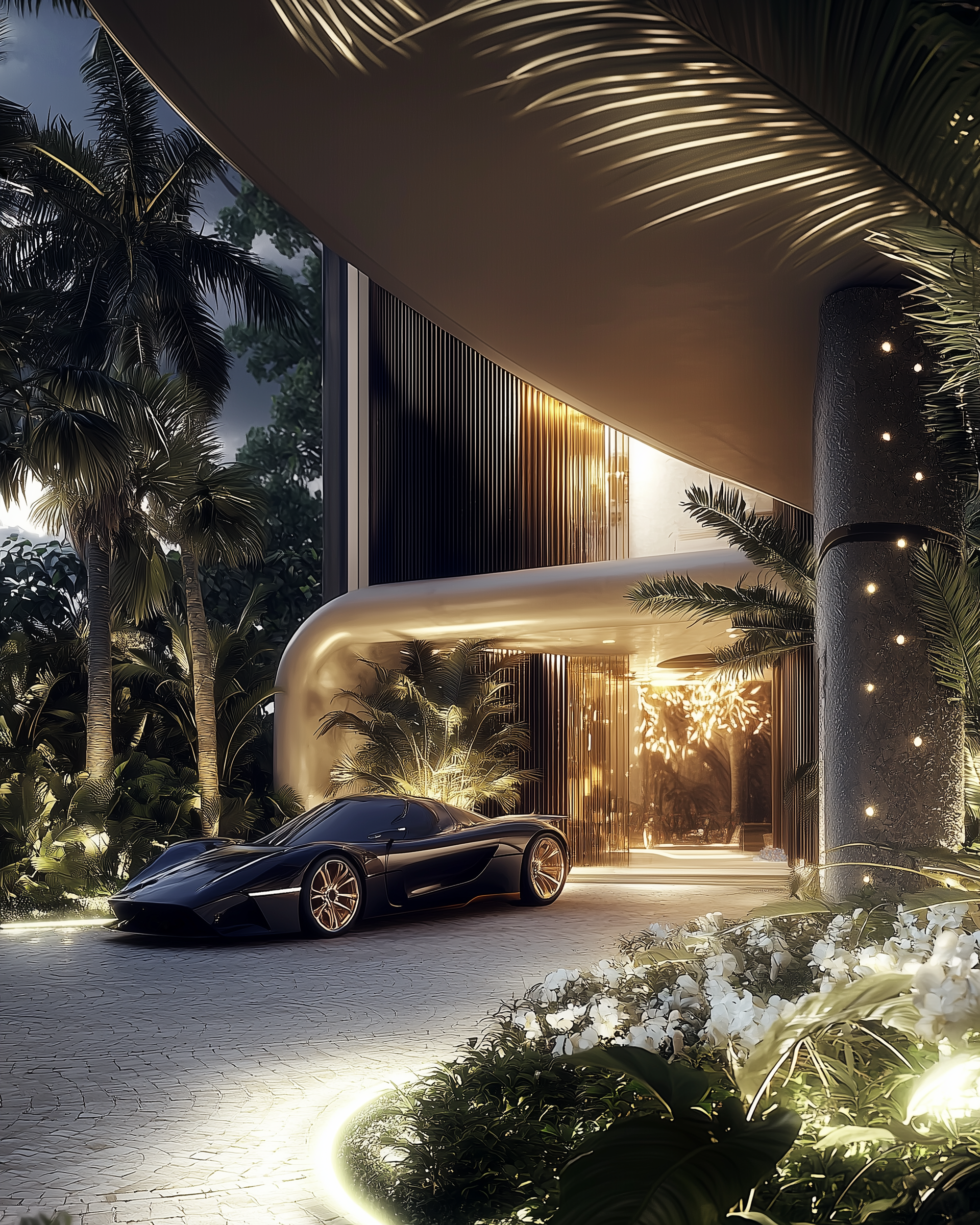
Secondary Access
Minimalism
Minimalism is a design and art movement that originated in the late 1950s and early 1960s, primarily in the United States, as a reaction against the excesses of abstract expressionism and consumer culture. Rooted in the principle of "less is more," minimalism seeks to strip designs down to their essential elements, emphasizing simplicity, functionality, and clarity. The philosophy behind minimalism focuses on creating spaces that promote peace and tranquility by eliminating clutter and distractions, thus allowing form, materials, and light to take center stage.
Key characteristics:
Simplicity and clarity of form
Use of clean, straight lines
Open and uncluttered spaces
Neutral and monochromatic color palettes
Emphasis on functionality
Minimal use of decorative elements
Integration of natural light
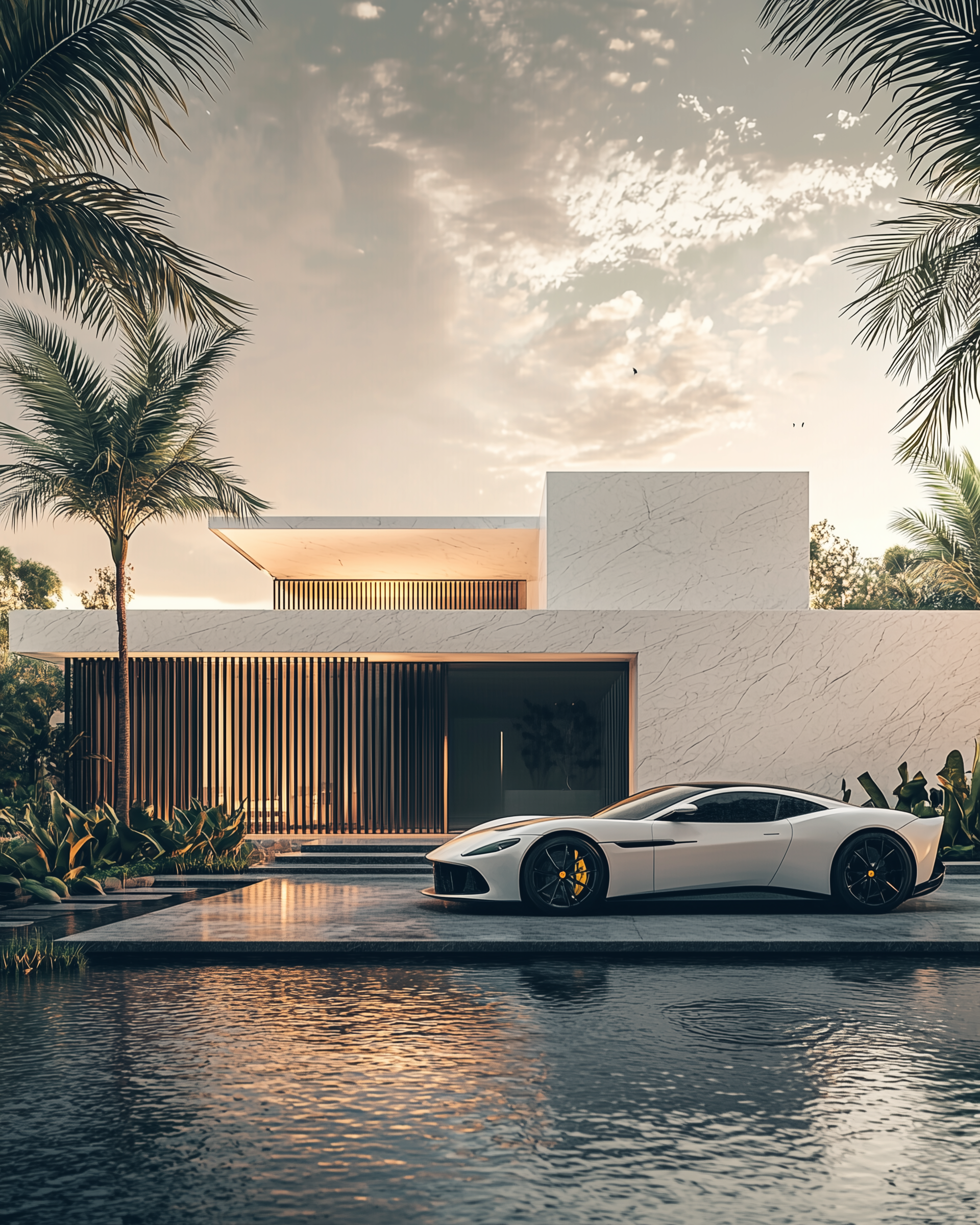
Front facade with floating motorcourt

Main living area with low-profile sofas

Entry foyer with water feature

Pool terrace

Bathroom with feature tub

Bedroom with aquarium
Moroccan Style
Moroccan style is a vibrant and eclectic design tradition that has developed over centuries, influenced by Berber, Arab, Andalusian, and French colonial cultures. Originating in North Africa, this style reflects Morocco's rich history as a cultural crossroads. It emphasizes intricate craftsmanship, bold colors, and a seamless blend of indoor and outdoor spaces. The philosophy behind Moroccan design focuses on creating warm and inviting environments that celebrate natural materials, artistic expression, and the integration of art into everyday life.
Key characteristics:
Intricate geometric patterns and zellige tilework
Keyhole and horseshoe arches
Mashrabiya screens and ornate latticework
Courtyards (riads) with water features
Use of vibrant and bold colors
Ornate carved wood and decorative plasterwork

Main living area
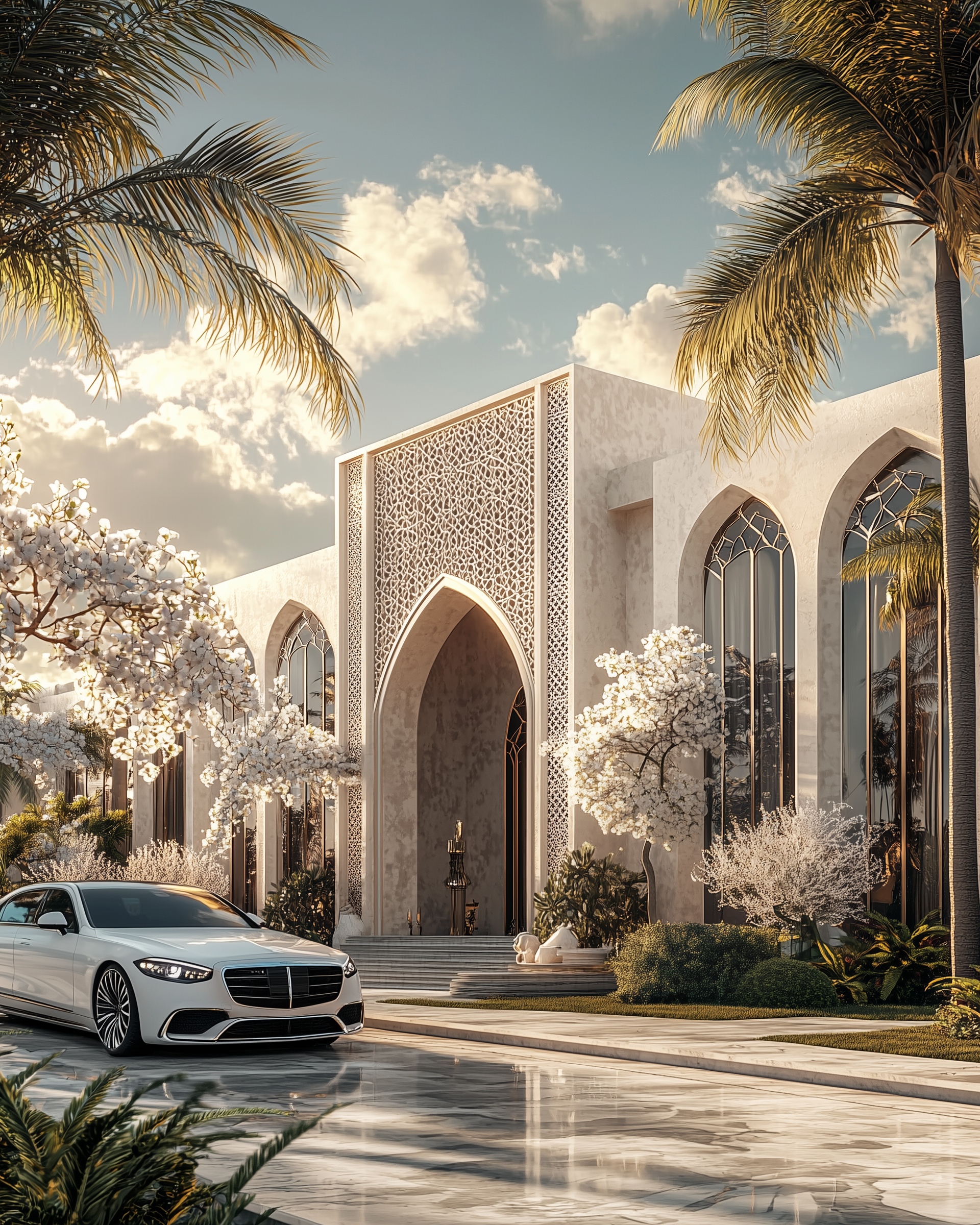
Motorcourt with main entrance
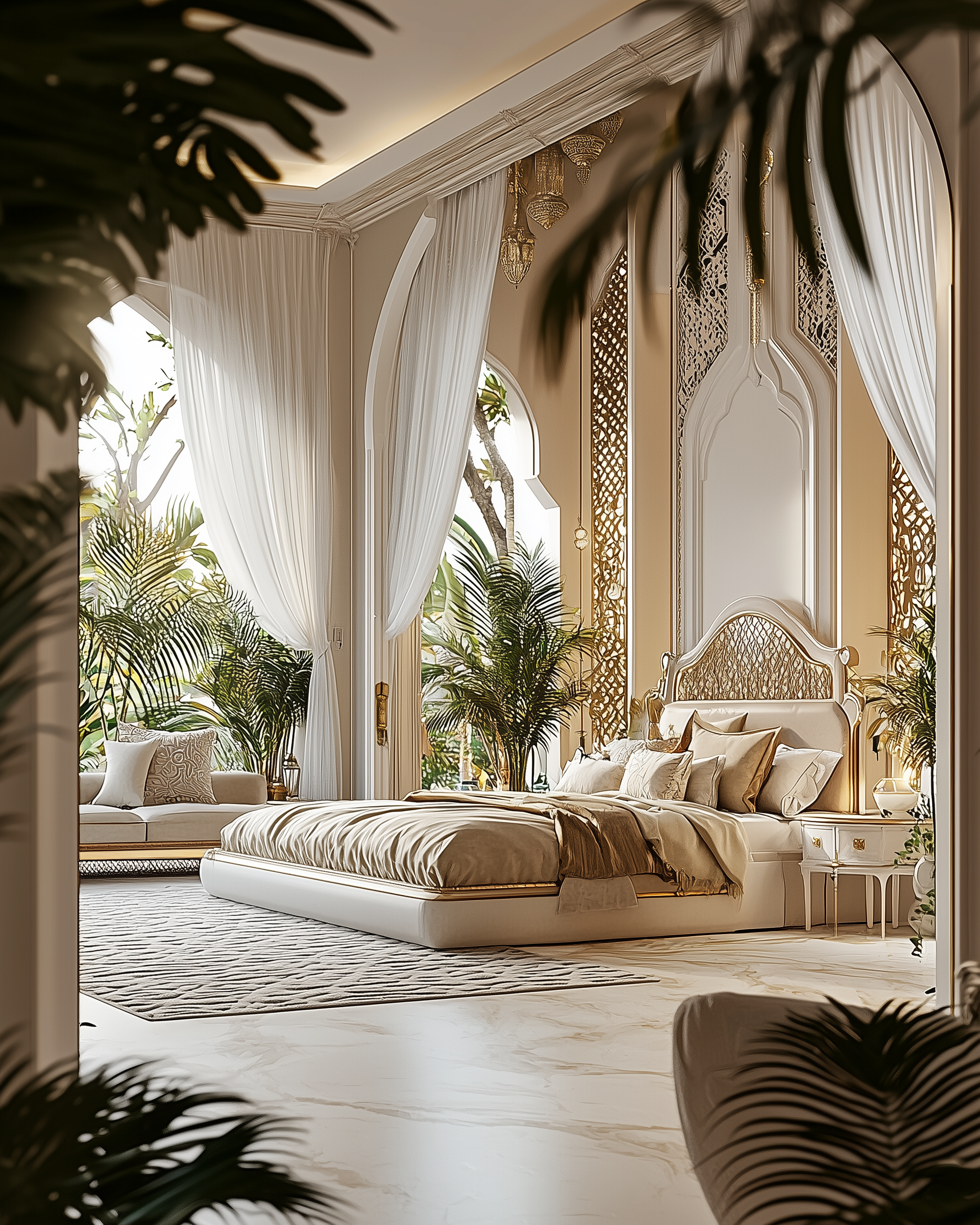
Master bedroom
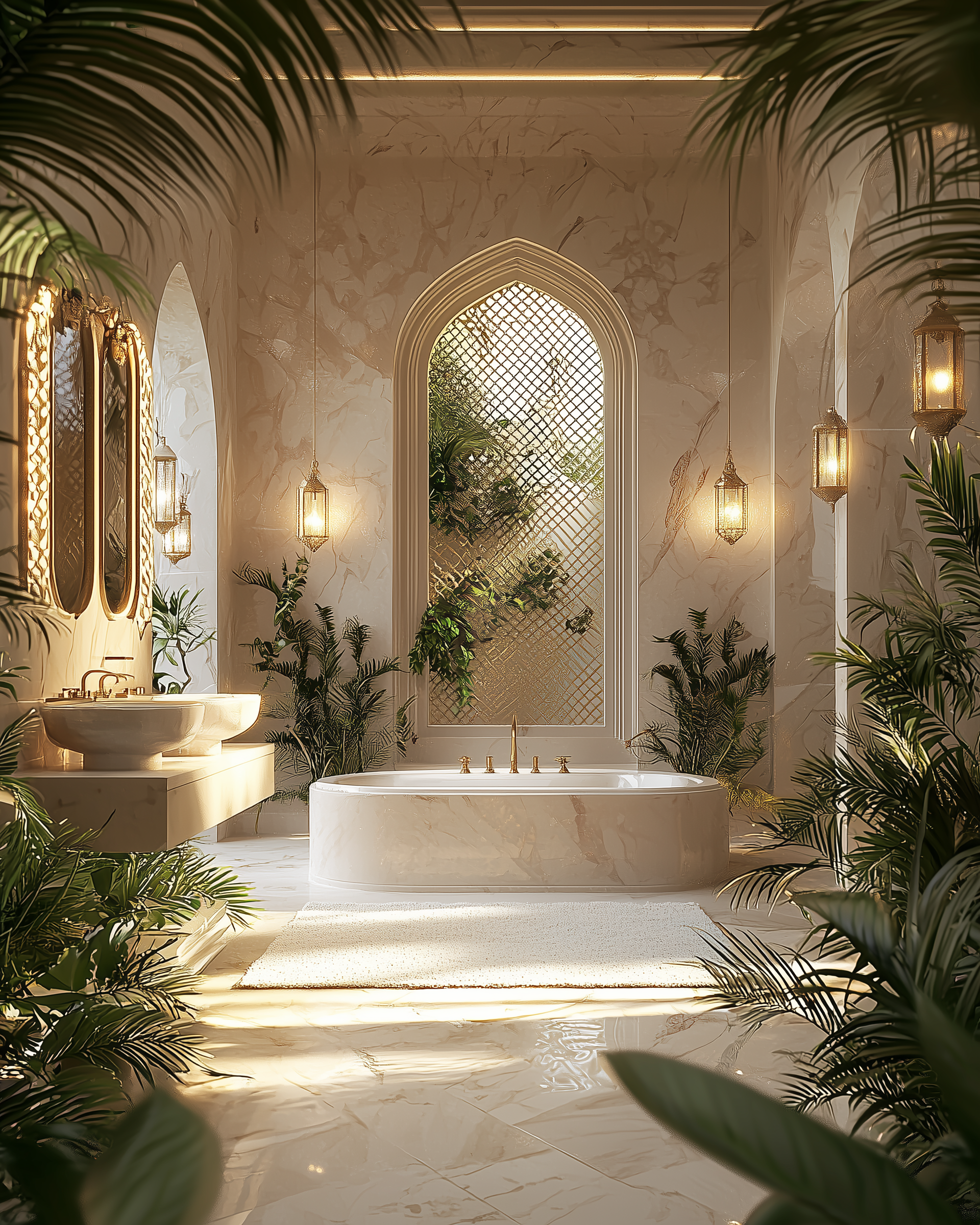
Master bathroom
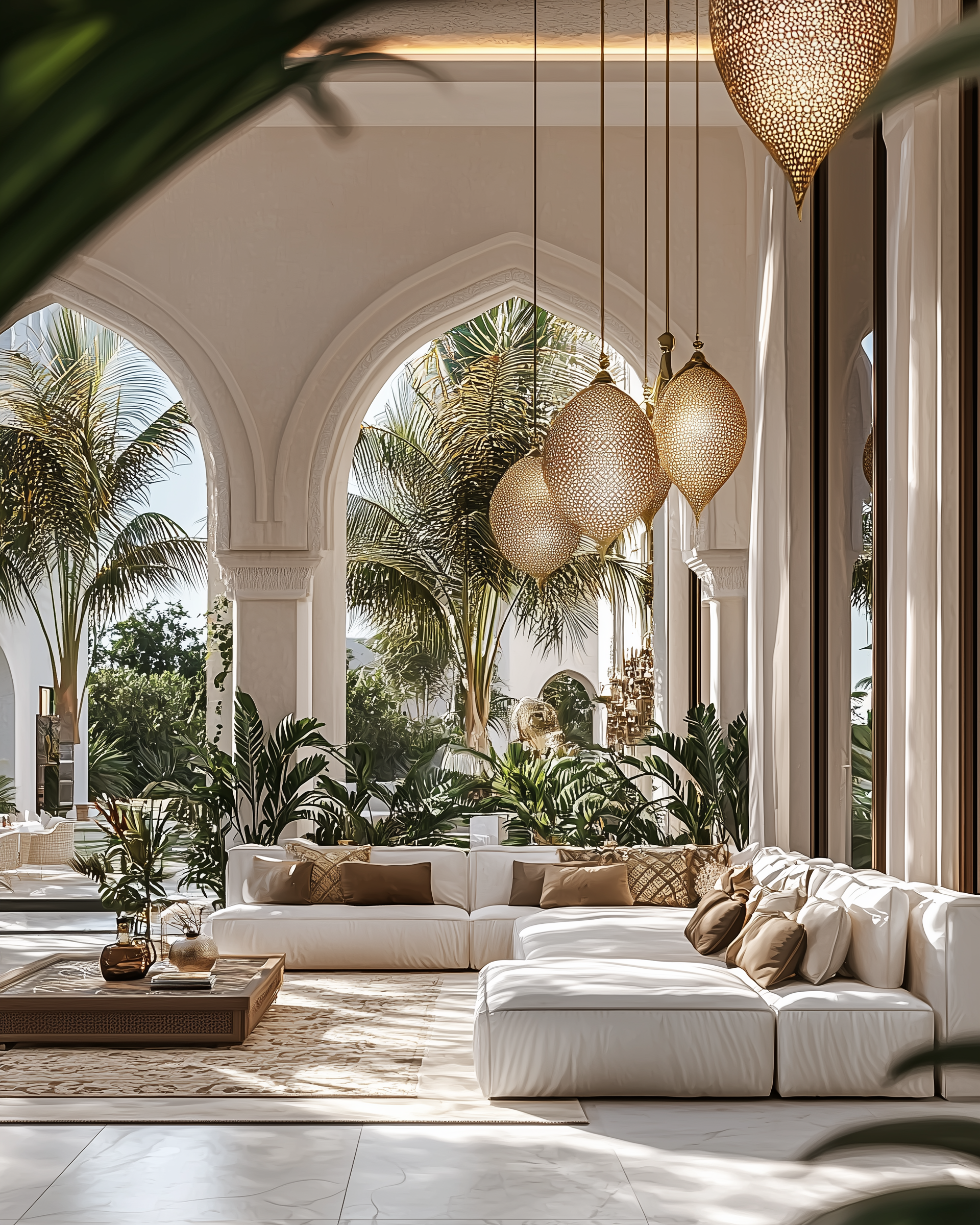
Main hall
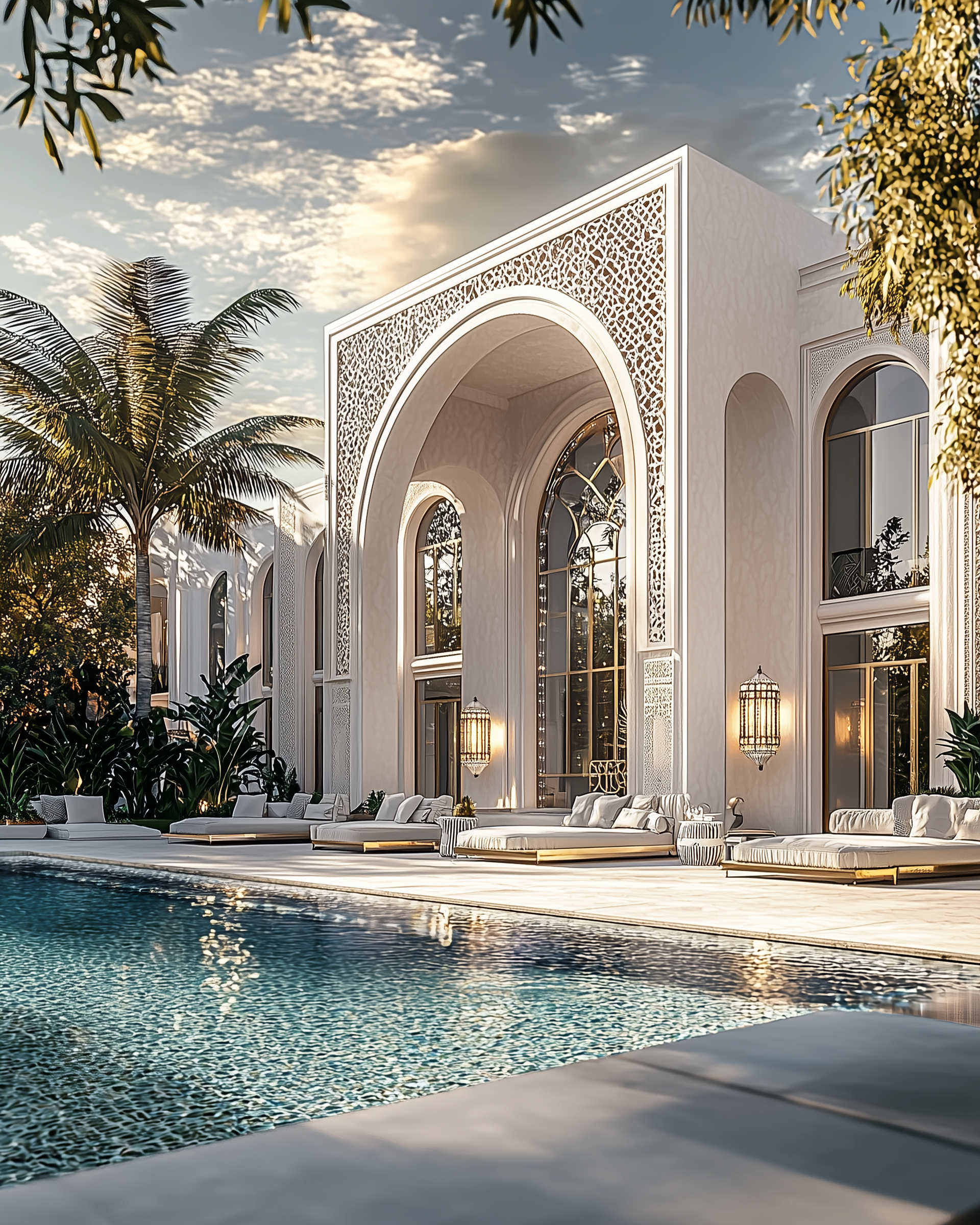
Pool area

Entrance approach
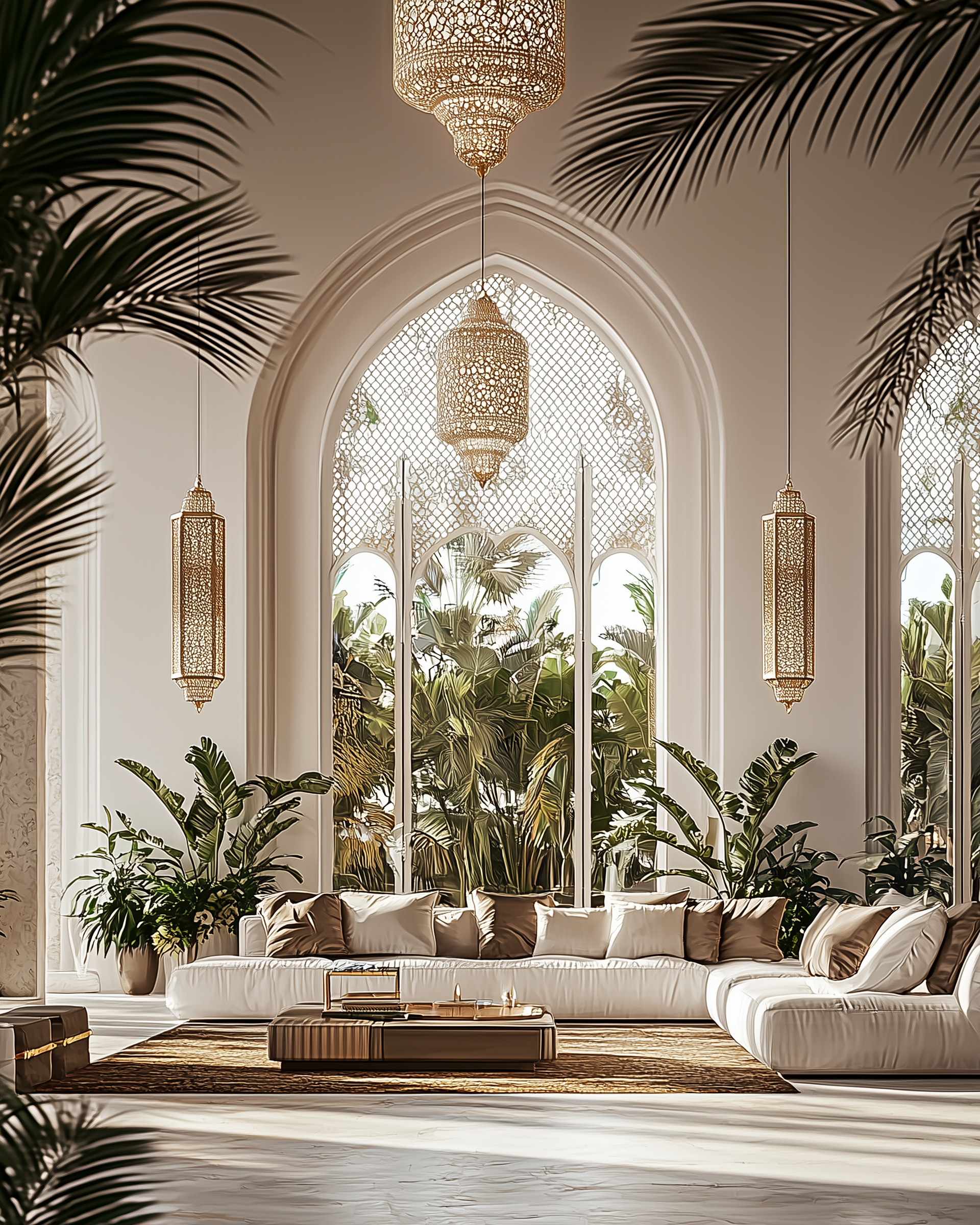
Side lounge
